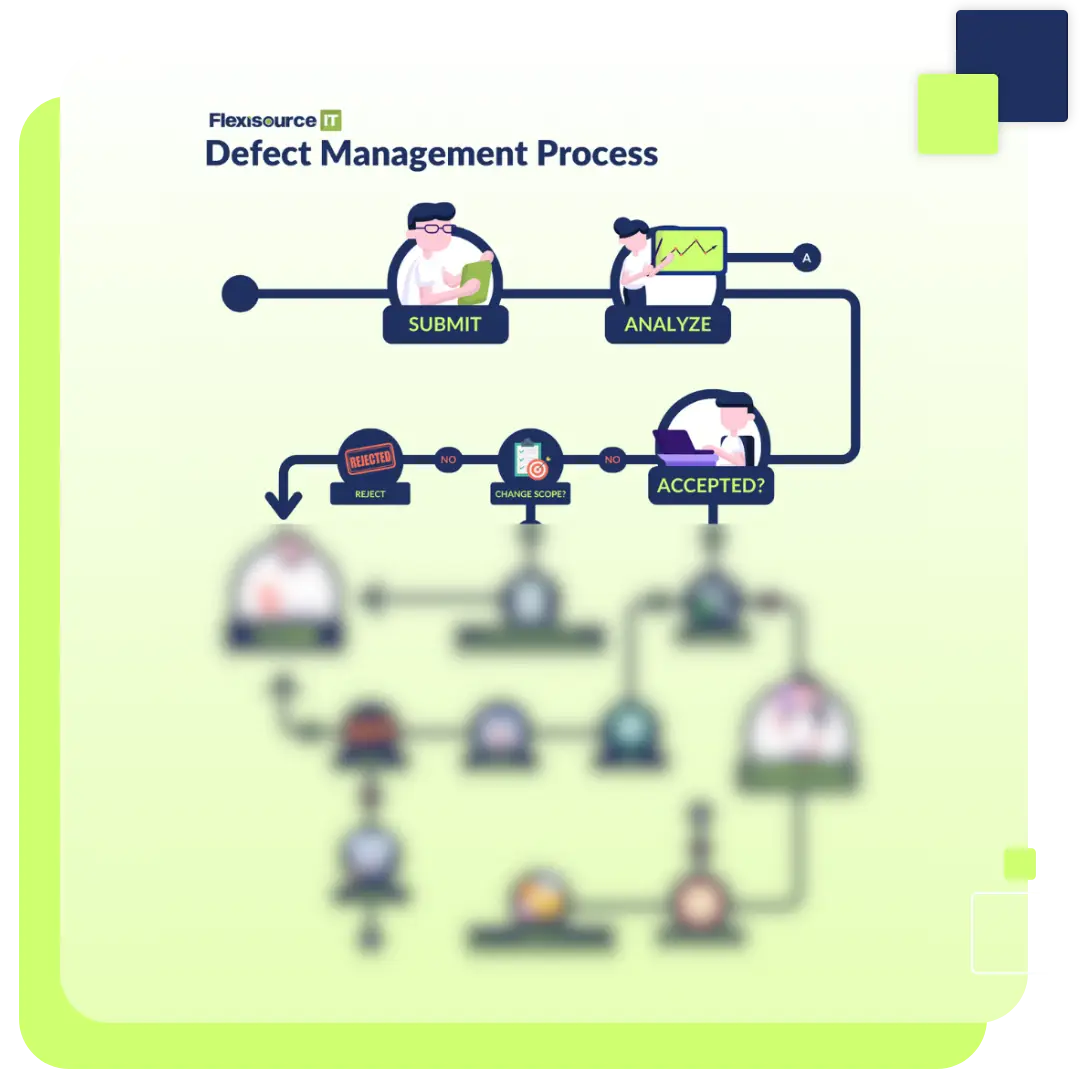Defect Management Process
EXCLUSIVE WHITE PAPERS FOR TECH LEADERS
Gain valuable insights into IT software development and the evolving tech landscape. Our white papers cover the latest strategies, trends, and best practices, empowering leaders to make strategic decisions, drive innovation, and stay ahead of the competition.
*Note: Please use other web browsers or open the web page on incognito if you face any issues when using our forms
Get Our White Papers For Free
Defect Management Process: A Systematic Approach to Bug Fixing & Software Quality Assurance

Did you know that software defects can cost millions of dollars?
Bugs are inevitable in software development, but with an effective defect management process
they don’t have to disrupt your development flow or reduce efficiency. Mastering defect management is key to preventing costly delays, maintaining high-quality software, and ensuring a smooth development process.
This white paper provides a proven strategy for fixing and managing defects efficiently with a structured resolution process—helping you catch issues early, improve collaboration, and achieve significant cost savings. With the right approach, you can streamline development, enhance software reliability, and deliver high-quality products on time, ensuring a seamless user experience, increased customer satisfaction, and long-term trust in your software.
Key Learnings from Bug Fixing & Software QA:
By reading this white paper, you will learn:
- How to identify and track software
- Why early bug detection saves time, money, and prevents project delays
- The role of defect management in improving software quality & user experience
- How structured QA processes reduce rework & optimize development efficiency
- Best practices for collaboration between Dev, QA, and stakeholders

Key Benefits:
- Early Defect Detection – Identify and resolve issues before they escalate.
- Prioritized Bug Fixing – Address critical defects based on severity and impact.
- Seamless Collaboration – Improve teamwork between Dev, QA, and stakeholders.
- Cost & Time Efficiency – Reduce late-stage fixes and accelerate delivery.
- Higher Software Quality – Ensure reliability, stability, and customer satisfaction.


